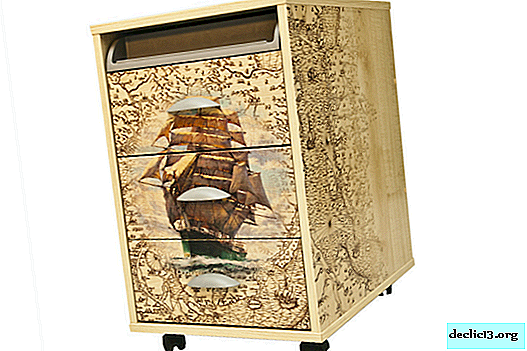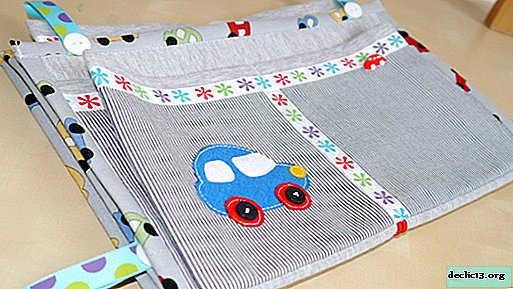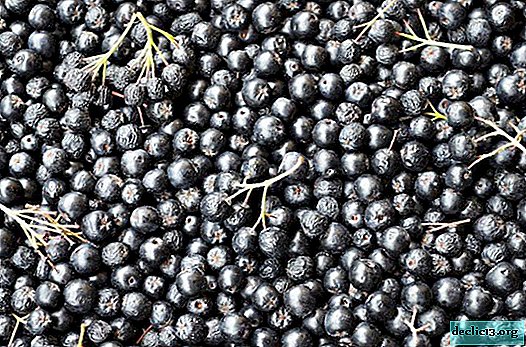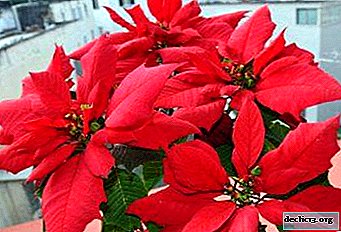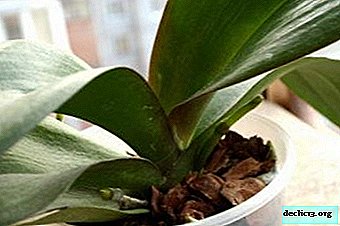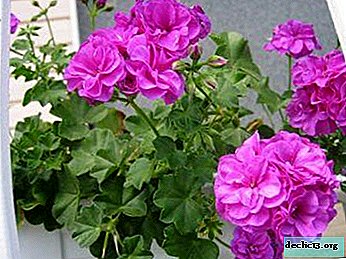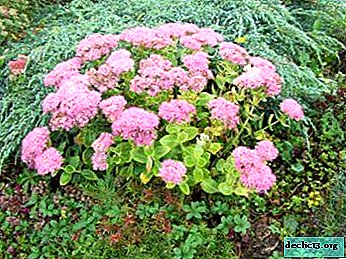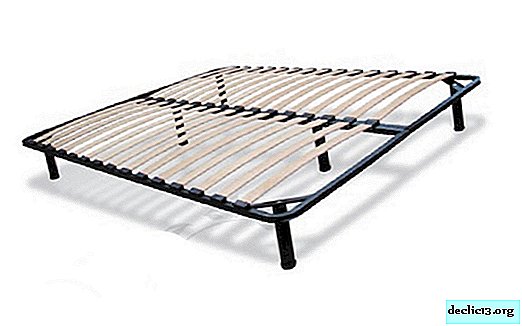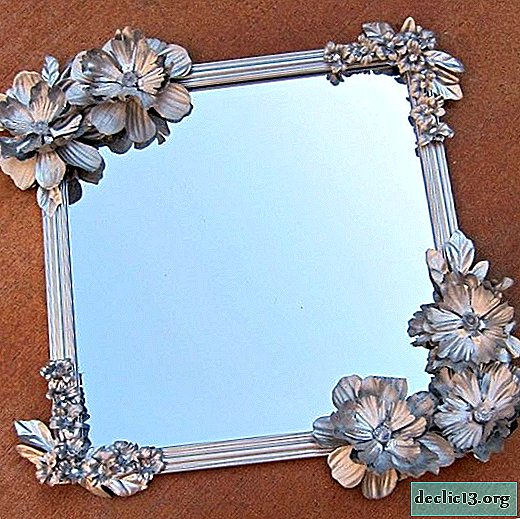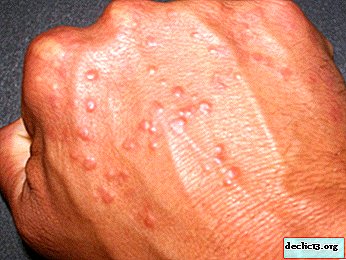What pests are dangerous for cyclamen: ways to combat them and disease prevention
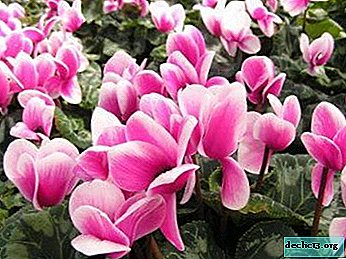
Cyclamen is a plant from the genus of herbaceous perennials of the Mirsinov family. There are about twenty species in the genus. In nature, it lives in the Mediterranean, Northeast Africa, Iran and Turkey. Thanks to selection work, some of the species are grown on the windowsill, balcony and loggia.
Florists buy indoor cyclamen to use its juice to treat sinusitis. Sometimes he dies before he manages to give the juice, and all because of pests. Let's find out which pests are most common and what are the methods of dealing with them.
What is this plant?
Cyclamen has an interesting root shape. It is a flattened corm in a regular round shape. Its diameter is 15 cm. The growth point on it is one, and not several, like other indoor plants. How can the leaves be characterized? They are leathery, basal and heart-shaped. They grow on petioles, whose length is 30 cm. The color of the leaves is dark green, and the pattern on them is grayish-silver.
When flowering on cyclamen, buds of the original form are revealed. From the outside, it seems that outlandish butterflies have perched on top of leaves on peduncles. Why is this impression made? Because the buds are pointed and bent. They have a fringed shape. Depending on the type of cyclamen, the flowers can be purple, red and burgundy. Flowering time - 3 months.
Attention! Although some flower growers consider cyclamen moody, in fact, he is not like that. It is simply important to follow some care requirements, and it will not be a hassle.Causes of disease
Why are cyclamens sick?:
- Overdried indoor air.
- Waterlogged soil in a pot (how to save the flooded cyclamen can be found here).
- High temperature in the apartment.
- Incorrect soil.
- Watering when it is not needed.
- Lack of sunlight.
Description, photos and treatment methods
Most often, flower growers encounter three types of pests when growing cyclamens. They are affected by aphids, thrips, cyclamen mites. Is it hard to get rid of them?
Aphid
 Aphids are the most annoying pest. The only thing that even beginners can easily do when they appear is to fight it. The main thing is to take measures when the first signs of damage appear. This insect sucks juice, causing lasting damage and long-term damage. Having missed the accumulation of aphids on leaves and buds, after taking measures and subsequent flowering, they are not surprised at the irregular shape of the flowers. A wingless small insect with a body length of 1.4-2.5 mm sucks the juice from the soft tissues of cyclamen.
Aphids are the most annoying pest. The only thing that even beginners can easily do when they appear is to fight it. The main thing is to take measures when the first signs of damage appear. This insect sucks juice, causing lasting damage and long-term damage. Having missed the accumulation of aphids on leaves and buds, after taking measures and subsequent flowering, they are not surprised at the irregular shape of the flowers. A wingless small insect with a body length of 1.4-2.5 mm sucks the juice from the soft tissues of cyclamen.
To defeat aphids, they pick up a cotton swab moistened with the insecticide Aktar, Corado or Commander. After this treatment, the plant is watered abundantly from the shower with a strong stream of water.
Shield
 Another pest that harms cyclamen badly. This insect belongs to the Pseudococcid family.
Another pest that harms cyclamen badly. This insect belongs to the Pseudococcid family.
Adult individuals, looking like dark spots on leaves and stems, are usually motionless. Only the larvae creep along the flower, harming it everywhere.
Sometimes treatment with an insecticide solution does not bring the desired result. The flower grower tries and removes annoying small insects with a 5-mm body from the shield with a wet swab, and they reappear after a while. The fact is that adult males have wings. As soon as they feel something is wrong, they simply fly to another bush. Therefore, repeated treatment with solutions of Actellic and Aktar with a frequency of two weeks or a month, and the diseased flower is isolated from others.
Thrips
 Another pest is thrips. Individuals 2 mm long fall in love with leaves. Thanks to the wings, they fly from one leaf to another, quickly destroying the plant. Florists should take action until there are only silver streaks on the leaves. Then the consequences will be more serious: inhibition in growth, spots on the flowers and their deformation.
Another pest is thrips. Individuals 2 mm long fall in love with leaves. Thanks to the wings, they fly from one leaf to another, quickly destroying the plant. Florists should take action until there are only silver streaks on the leaves. Then the consequences will be more serious: inhibition in growth, spots on the flowers and their deformation.
If you do not change the microclimate in the apartment, cyclamen will die after spots appear on the flowers, and on the leaves are sticky black discharge.
Thrips is an insect whose appearance is easier to prevent than to stop. To maintain the desired humidity, spraying from a spray bottle or water tank, located nearby with a pot of cyclamen, helps. In the fight against insects, tape traps and insecticides Akarin, Arrivo and Apache are used.
Acarin, when processing indoor plants, is bred as follows: 5 ml ampoule with the drug in half a liter of water. It is effective if the air temperature in the room is + 18-20⁰С. Two days later, they are treated against thrips again in order to consolidate the result..
Cyclamen tick
 It is difficult to get rid of a cyclamen tick if he has chosen cyclamen. The reason is simple: the fact is that this insect is very small, it looks like a particle of dust, and not like a serious enemy. This impression is erroneous.
It is difficult to get rid of a cyclamen tick if he has chosen cyclamen. The reason is simple: the fact is that this insect is very small, it looks like a particle of dust, and not like a serious enemy. This impression is erroneous.
An adult is a threat to the life of the plant. No less harm is brought by larvae, which suck out all the strength from it through nutrient juices.
Do not confuse cyclamen and spider mite, the second can be distinguished with the naked eye. The cyclamen one can be seen as it should only with a strong increase.
Reference! Fresh flower growers think that a cyclamen tick only affects cyclamen. This is not true. It harms azaleas, fuchsias, balsam, Kalanchoe, etc.It is simply revealed too late when it is impossible to do something to combat the pest. How to understand that the plant is sick?
Cyclamen mite appears when the room temperature is high. Initially, dusty deposits form on parts of the plant, which can be seen in the folds of young foliage, flowering buds and apical growth points. Due to the widespread defeat of all parts of cyclamen stops growing, the leaves turn yellow and twist. Ticks multiply rapidly: after three weeks, a young generation will appear that will begin to destroy undetermined parts.
Having noticed signs of cyclamen damage by a tick, they immediately isolate it from other indoor plants. Some gardeners struggle with him, immersing the pot with him in hot water for 15 minutes. After this time, all affected parts are removed. After such manipulations with cyclamen, the pot is cleaned in a shaded place and kept in it for a couple of days.
The temperature of the water into which the flower is lowered is 45⁰С. It should be unchanged for fifteen minutes.
Prevention
Indoor plants are difficult to cure. To prevent the flower from dying, it is advisable to prevent cyclamen diseases. Also a lot depends on where you bought it. If from the hands, damage to the leaves, stems and flowers of aphids and thrips is not excluded. Never violate the recommended care conditions, since any deviation is fraught with the appearance of pests.
Every day they inspect the plant. Do not miss a single leaf or flower, conducting an inspection using a magnifier. If they find strange spots, isolate him from others and begin to take measures to defeat the ailment. Sometimes even insecticide treatment does not kill the pest from the first try. Isn't it easier to take preventative measures?
Attention! So that pests do not appear, the soil is sterilized and steamed before cyclamen transplantation. For preventive purposes, it is treated with a solution of potassium permanganate.It should be weak and its shade should be slightly pink. Potassium permanganate is an effective means of combating bacterial and fungal infections. Do not often fertilize with nitrogen fertilizers, which reduce the immunity of cyclamen.
Conclusion
Cyclamen, whose bright flowers on long peduncles are knocked out from the depths of leaves, rarely get sick. With proper care, flower growers do not know the hassle with him. Just need to remove the timely yellowing leaves, which are a source of infection, rot and the spread of pests. It is also important not to overmoisten or overdry the soil in the pot.

